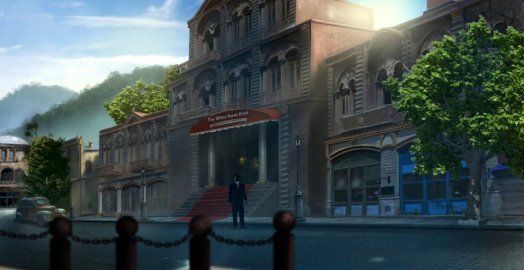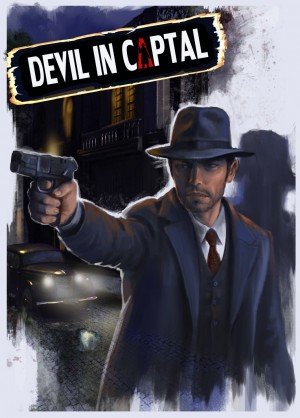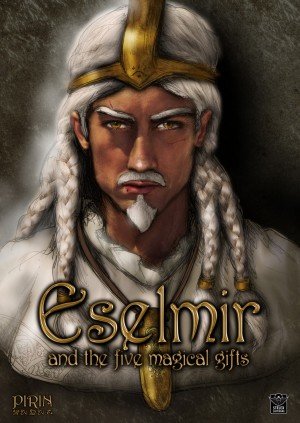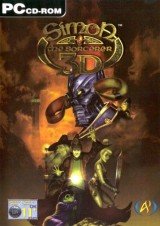Review for Devil in the Capital

With most games it’s easy to identify strengths and failings, but RSK Entertainment’s Devil in the Capital isn’t most games. This 1950s point-and-click Iranian murder mystery seems quite content with taking a middle ground approach, being neither particularly good nor particularly bad all across the board. It has a lot of elements from which a great game might have emerged, but seems so hesitant to use them that they never quite come together in a satisfying way, settling instead for a pleasant, if sometimes confusing but always overly-helpful adventure.
Devil in the Capital is a sequel of sorts to Murder in Tehran’s Alleys 1933 (for which there is even a sneaky in-game ad, reminiscent of similar fun plugs in old Sierra games), though no prior knowledge is necessary. Set some 20 years later in 1953, we rejoin polite police detective Mohammad Afshar on his latest case. With the political intrigue surrounding the nationalization of Iran’s oil industry always lurking in the background, Afshar finds himself in the city of Rasht to look into the deaths of Doctor Zirak Zadeh, an advocate of the national movement, and of fellow detective Ahmad Hosseini, who was also investigating the events surrounding Zadeh’s death. Afshar barely has the chance to settle into his hotel accommodations, however, before another murder happens right outside in particularly grisly fashion: a man has not only been killed but had his heart removed.
Over three playable acts, you guide Afshar through his investigation into these deaths. Or perhaps it’s more fair to say that he guides you. Afshar is not shy when it comes to offering direction on how to proceed, either speaking aloud or else writing in his journal exactly where he needs to go and what he needs to do once he gets there. Devil in the Capital feels very much like playing a game with someone who has already finished it and is excited to tell you what to do next. It’s not necessarily a bad thing, but coupled with the game’s completely linear nature, it does mean there’s almost no challenge to be had.
Even when you get into some of the more off-the-wall adventure gamey puzzles, Afshar is there to help. At one point your investigation takes you to a boarding house run by an Englishman. When Afshar is refused entry, instead of providing his official police credentials he politely takes his leave and looks for another way in. As it happens, the boarding house is directly connected to a tavern, so Afshar guides you through the steps of sabotaging the electrical systems of the conjoined properties, distracting the owner of the tavern in order to take food to give to a homeless man in exchange for a screwdriver, which is used to remove a mirror covering the old sealed entrance between the two buildings. It’s really not a spoiler to detail this series of steps, as Afshar himself provides you with all the direction you need throughout the whole sequence.
Fortunately, the boarding house obstacle is the most extreme case of “adventure game logic”. The rest of the puzzles are much more grounded in reality. Most of them are inventory-based, but there are also a number of mechanical puzzles. Afshar is quite proud of his mechanical abilities, which he uses to make various repairs throughout Rasht, such as to the hotel’s telephone junction box and a cab driver’s car that is needed to travel out of the city. These don’t actually require much ability, though, as they are usually no more complicated than finding one or two loose wires in close-up scenes and reconnecting them to their appropriate terminals. Other typical detective tasks make appearances as well, such as piecing together torn documents and picking locks.
Rasht and its surrounding environs are presented in standard 2.5D style. Afshar and the rest of the cast are rendered as reasonably detailed 3D characters over realistic pre-rendered backgrounds. To the best of my knowledge, the Iranian city hasn’t been explored in an adventure game before and should offer some interesting sights. It’s a shame, then, that the majority of locations feel like rather generic boxes, consisting of simple offices, hotel rooms, and bland street scenes. A couple of areas are more interesting once you get outside of Rasht proper, such as the stacked village of Masuleh, where the roofs of lower-level dwellings are covered with the gardens of higher-level ones, but such views are few and far between.
Controlling Afshar is also done in typical third-person point-and-click fashion. When you move the mouse over a hotspot, the pointer will change to show that it can be interacted with in a context-appropriate manner, such as examining a body or talking to a member of the local gendarmerie. Pressing the space bar will reveal all hotspots in the current scene. Afshar can be walked around the screen by clicking, and double-clicking will put him into run mode, though it’s important to note that this only works by clicking when the cursor is not on a hotspot. Once Afshar has switched to a run, then clicking on a hotspot will have him speed to that area. Usually he’ll still be in run mode after interacting with the hotspot, although sometimes he’ll default back to walking again.
Whether running or walking, the game’s pathfinding abilities could use a little work. Sometimes Afshar will go quite out of his way before heading towards his destination. This is most notable when the protagonist returns to his hotel from the first murder scene. He appears at the side of the hotel with the entryway only a few steps away. However, simply clicking on the entrance will cause him to run all the way across the street before doubling back. You may find yourself micromanaging Afshar’s movement with interim mouse clicks in order to get him to navigate more directly from one place to another.
You’ll also want to pay close attention to Afshar’s routes in a couple of scenes early on. When arriving at the first crime scene and then later when heading to the back of the hotel to repair the telephone system, I initially found that necessary hotspots weren’t available to interact with. Instead, in both these places there were characters that needed to see Afshar first before the hotspots became available. Getting them to see him is done not by interacting with the characters themselves, but simply by walking in front of them. This is not true for everyone you encounter, and with all of the detective’s quite precise guidance otherwise, these were the only incidents that slowed me up in the little over three hours it took me to complete the game.
It would have taken me longer had I listened to all the dialog. However, as I don’t speak Persian I was able to read the English subtitles faster than the voice-overs ran and was able to click to advance through the lines. Devil in the Capital doesn’t have any in-game options, so there is no way to turn off the Persian voices. The English localization is done reasonably well, although it has a certain stilted formality and a few awkward vocabulary choices. Despite that, Afshar’s quite amiable and polite personality shines through. He is only too happy to help out his fellow officers and civilians alike, although there are a couple of moments when he gently rebuffs junior officers for their lack of good manners. Unfortunately, beyond his polite demeanour and his worries about the upheaval caused by the nationalization of the oil industry, we learn very little about Afshar to truly distinguish him. The other characters he meets are even thinner and feel like little more than talking puzzles used to move the game forward.
One key method by which the story progresses is through its cutscenes, when painted graphic novel frames take the place of the pre-rendered backgrounds. The panels slide around and zoom in and out of the screen but contain no animation themselves, in a style somewhat reminiscent of the cinematics in Gabriel Knight: Sins of the Fathers. Despite being so visually different from the rest of the game, these scenes fit the mood of the game well, with the only real discrepancy being that Afshar is dressed differently and looks quite a bit younger than his playable counterpart. The ending reveals the full plot through one of these cutscenes, tben concludes with a full screen’s worth of fairly fine print text that details the historic emergence of the Iranian oil industry. While educational, this seems rather disconnected from the rest of the investigation.
The case itself feels a bit muddled at times. As you investigate, various references to the growing civil unrest creep in. At the same time, the initial body you examine – the one with its heart cut out – ties into some manner of Satanist cult. The game does try to reconcile these different aspects, along with the corruption among various officials, but it never quite comes together in a cohesive way. It’s not bad per se, it just feels like a lot more could have been done with the material already at hand.
Fitting, perhaps, for a mystery set in the ‘50s, the game features a noir-ish instrumental soundtrack. With the change in venue from the familiar mobster-run cities of North America, the music has been given a subtle shift, introducing more underlying percussive instruments than usual. It does seem a bit at odds with the detective’s polite, non-hardboiled personality, but as the music is rather low-key throughout, the disparity isn’t that noticeable. As with many elements here, the score is mostly forgettable with no strong theme emerging.
Devil in the Capital incorporates many elements that have made other adventures successful – a real historical backdrop, political intrigue and corruption, mysterious cults, a protagonist you enjoy spending time with, even a unique locale – but ultimately these things aren’t exploited in a particularly compelling way. The game seems content to just be average rather than stretching for greatness, whether in terms of story or gameplay, as the manner in which Detective Afshar guides you through everything renders the inherently extraordinary events rather mundane. It’s not a poor experience by any means, but it is a rather unmemorable one. The production values are decent so if you enjoy most traditional 2.5D adventures or just want a game where you don’t have to think too much, then Devil in the Capital may well tide you over for a short while before forgetting all about it.



_capsule_fog__medium.png)























